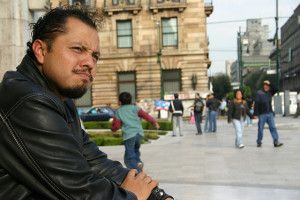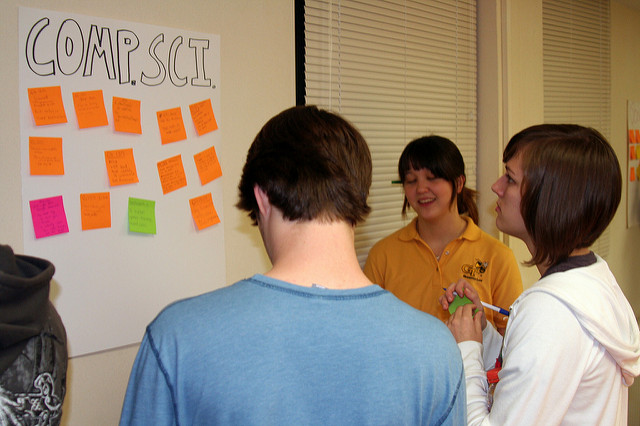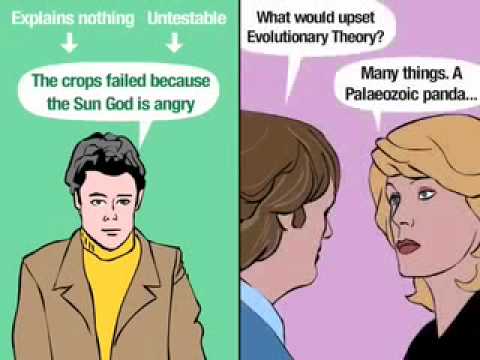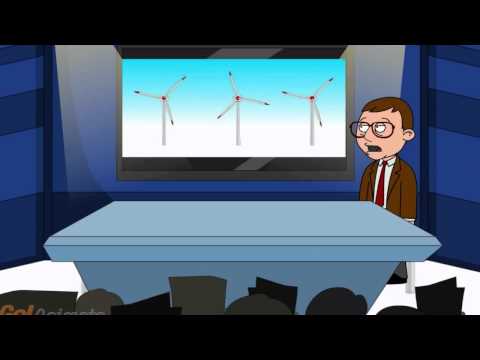30.3: Critical Thinking
- Page ID
- 175770
\( \newcommand{\vecs}[1]{\overset { \scriptstyle \rightharpoonup} {\mathbf{#1}} } \)
\( \newcommand{\vecd}[1]{\overset{-\!-\!\rightharpoonup}{\vphantom{a}\smash {#1}}} \)
\( \newcommand{\dsum}{\displaystyle\sum\limits} \)
\( \newcommand{\dint}{\displaystyle\int\limits} \)
\( \newcommand{\dlim}{\displaystyle\lim\limits} \)
\( \newcommand{\id}{\mathrm{id}}\) \( \newcommand{\Span}{\mathrm{span}}\)
( \newcommand{\kernel}{\mathrm{null}\,}\) \( \newcommand{\range}{\mathrm{range}\,}\)
\( \newcommand{\RealPart}{\mathrm{Re}}\) \( \newcommand{\ImaginaryPart}{\mathrm{Im}}\)
\( \newcommand{\Argument}{\mathrm{Arg}}\) \( \newcommand{\norm}[1]{\| #1 \|}\)
\( \newcommand{\inner}[2]{\langle #1, #2 \rangle}\)
\( \newcommand{\Span}{\mathrm{span}}\)
\( \newcommand{\id}{\mathrm{id}}\)
\( \newcommand{\Span}{\mathrm{span}}\)
\( \newcommand{\kernel}{\mathrm{null}\,}\)
\( \newcommand{\range}{\mathrm{range}\,}\)
\( \newcommand{\RealPart}{\mathrm{Re}}\)
\( \newcommand{\ImaginaryPart}{\mathrm{Im}}\)
\( \newcommand{\Argument}{\mathrm{Arg}}\)
\( \newcommand{\norm}[1]{\| #1 \|}\)
\( \newcommand{\inner}[2]{\langle #1, #2 \rangle}\)
\( \newcommand{\Span}{\mathrm{span}}\) \( \newcommand{\AA}{\unicode[.8,0]{x212B}}\)
\( \newcommand{\vectorA}[1]{\vec{#1}} % arrow\)
\( \newcommand{\vectorAt}[1]{\vec{\text{#1}}} % arrow\)
\( \newcommand{\vectorB}[1]{\overset { \scriptstyle \rightharpoonup} {\mathbf{#1}} } \)
\( \newcommand{\vectorC}[1]{\textbf{#1}} \)
\( \newcommand{\vectorD}[1]{\overrightarrow{#1}} \)
\( \newcommand{\vectorDt}[1]{\overrightarrow{\text{#1}}} \)
\( \newcommand{\vectE}[1]{\overset{-\!-\!\rightharpoonup}{\vphantom{a}\smash{\mathbf {#1}}}} \)
\( \newcommand{\vecs}[1]{\overset { \scriptstyle \rightharpoonup} {\mathbf{#1}} } \)
\( \newcommand{\vecd}[1]{\overset{-\!-\!\rightharpoonup}{\vphantom{a}\smash {#1}}} \)
\(\newcommand{\avec}{\mathbf a}\) \(\newcommand{\bvec}{\mathbf b}\) \(\newcommand{\cvec}{\mathbf c}\) \(\newcommand{\dvec}{\mathbf d}\) \(\newcommand{\dtil}{\widetilde{\mathbf d}}\) \(\newcommand{\evec}{\mathbf e}\) \(\newcommand{\fvec}{\mathbf f}\) \(\newcommand{\nvec}{\mathbf n}\) \(\newcommand{\pvec}{\mathbf p}\) \(\newcommand{\qvec}{\mathbf q}\) \(\newcommand{\svec}{\mathbf s}\) \(\newcommand{\tvec}{\mathbf t}\) \(\newcommand{\uvec}{\mathbf u}\) \(\newcommand{\vvec}{\mathbf v}\) \(\newcommand{\wvec}{\mathbf w}\) \(\newcommand{\xvec}{\mathbf x}\) \(\newcommand{\yvec}{\mathbf y}\) \(\newcommand{\zvec}{\mathbf z}\) \(\newcommand{\rvec}{\mathbf r}\) \(\newcommand{\mvec}{\mathbf m}\) \(\newcommand{\zerovec}{\mathbf 0}\) \(\newcommand{\onevec}{\mathbf 1}\) \(\newcommand{\real}{\mathbb R}\) \(\newcommand{\twovec}[2]{\left[\begin{array}{r}#1 \\ #2 \end{array}\right]}\) \(\newcommand{\ctwovec}[2]{\left[\begin{array}{c}#1 \\ #2 \end{array}\right]}\) \(\newcommand{\threevec}[3]{\left[\begin{array}{r}#1 \\ #2 \\ #3 \end{array}\right]}\) \(\newcommand{\cthreevec}[3]{\left[\begin{array}{c}#1 \\ #2 \\ #3 \end{array}\right]}\) \(\newcommand{\fourvec}[4]{\left[\begin{array}{r}#1 \\ #2 \\ #3 \\ #4 \end{array}\right]}\) \(\newcommand{\cfourvec}[4]{\left[\begin{array}{c}#1 \\ #2 \\ #3 \\ #4 \end{array}\right]}\) \(\newcommand{\fivevec}[5]{\left[\begin{array}{r}#1 \\ #2 \\ #3 \\ #4 \\ #5 \\ \end{array}\right]}\) \(\newcommand{\cfivevec}[5]{\left[\begin{array}{c}#1 \\ #2 \\ #3 \\ #4 \\ #5 \\ \end{array}\right]}\) \(\newcommand{\mattwo}[4]{\left[\begin{array}{rr}#1 \amp #2 \\ #3 \amp #4 \\ \end{array}\right]}\) \(\newcommand{\laspan}[1]{\text{Span}\{#1\}}\) \(\newcommand{\bcal}{\cal B}\) \(\newcommand{\ccal}{\cal C}\) \(\newcommand{\scal}{\cal S}\) \(\newcommand{\wcal}{\cal W}\) \(\newcommand{\ecal}{\cal E}\) \(\newcommand{\coords}[2]{\left\{#1\right\}_{#2}}\) \(\newcommand{\gray}[1]{\color{gray}{#1}}\) \(\newcommand{\lgray}[1]{\color{lightgray}{#1}}\) \(\newcommand{\rank}{\operatorname{rank}}\) \(\newcommand{\row}{\text{Row}}\) \(\newcommand{\col}{\text{Col}}\) \(\renewcommand{\row}{\text{Row}}\) \(\newcommand{\nul}{\text{Nul}}\) \(\newcommand{\var}{\text{Var}}\) \(\newcommand{\corr}{\text{corr}}\) \(\newcommand{\len}[1]{\left|#1\right|}\) \(\newcommand{\bbar}{\overline{\bvec}}\) \(\newcommand{\bhat}{\widehat{\bvec}}\) \(\newcommand{\bperp}{\bvec^\perp}\) \(\newcommand{\xhat}{\widehat{\xvec}}\) \(\newcommand{\vhat}{\widehat{\vvec}}\) \(\newcommand{\uhat}{\widehat{\uvec}}\) \(\newcommand{\what}{\widehat{\wvec}}\) \(\newcommand{\Sighat}{\widehat{\Sigma}}\) \(\newcommand{\lt}{<}\) \(\newcommand{\gt}{>}\) \(\newcommand{\amp}{&}\) \(\definecolor{fillinmathshade}{gray}{0.9}\)Introduction
Learning Objectives
- define critical thinking
- identify the role that logic plays in critical thinking
- apply critical thinking skills to problem-solving scenarios
- apply critical thinking skills to evaluation of information

Consider these thoughts about the critical thinking process, and how it applies not just to our school lives but also our personal and professional lives.
“Thinking Critically and Creatively”
Critical thinking skills are perhaps the most fundamental skills involved in making judgments and solving problems. You use them every day, and you can continue improving them.
The ability to think critically about a matter—to analyze a question, situation, or problem down to its most basic parts—is what helps us evaluate the accuracy and truthfulness of statements, claims, and information we read and hear. It is the sharp knife that, when honed, separates fact from fiction, honesty from lies, and the accurate from the misleading. We all use this skill to one degree or another almost every day. For example, we use critical thinking every day as we consider the latest consumer products and why one particular product is the best among its peers. Is it a quality product because a celebrity endorses it? Because a lot of other people may have used it? Because it is made by one company versus another? Or perhaps because it is made in one country or another? These are questions representative of critical thinking.
The academic setting demands more of us in terms of critical thinking than everyday life. It demands that we evaluate information and analyze myriad issues. It is the environment where our critical thinking skills can be the difference between success and failure. In this environment we must consider information in an analytical, critical manner. We must ask questions—What is the source of this information? Is this source an expert one and what makes it so? Are there multiple perspectives to consider on an issue? Do multiple sources agree or disagree on an issue? Does quality research substantiate information or opinion? Do I have any personal biases that may affect my consideration of this information?
It is only through purposeful, frequent, intentional questioning such as this that we can sharpen our critical thinking skills and improve as students, learners and researchers.
—Dr. Andrew Robert Baker, Foundations of Academic Success: Words of Wisdom
Defining Critical Thinking
Thinking comes naturally. You don’t have to make it happen—it just does. But you can make it happen in different ways. For example, you can think positively or negatively. You can think with “heart” and you can think with rational judgment. You can also think strategically and analytically, and mathematically and scientifically. These are a few of multiple ways in which the mind can process thought.
What are some forms of thinking you use? When do you use them, and why?
As a college student, you are tasked with engaging and expanding your thinking skills. One of the most important of these skills is critical thinking. Critical thinking is important because it relates to nearly all tasks, situations, topics, careers, environments, challenges, and opportunities. It’s not restricted to a particular subject area.
Critical thinking is clear, reasonable, reflective thinking focused on deciding what to believe or do. It means asking probing questions like, “How do we know?” or “Is this true in every case or just in this instance?” It involves being skeptical and challenging assumptions, rather than simply memorizing facts or blindly accepting what you hear or read.
Imagine, for example, that you’re reading a history textbook. You wonder who wrote it and why, because you detect certain assumptions in the writing. You find that the author has a limited scope of research focused only on a particular group within a population. In this case, your critical thinking reveals that there are “other sides to the story.”
Who are critical thinkers, and what characteristics do they have in common? Critical thinkers are usually curious and reflective people. They like to explore and probe new areas and seek knowledge, clarification, and new solutions. They ask pertinent questions, evaluate statements and arguments, and they distinguish between facts and opinion. They are also willing to examine their own beliefs, possessing a manner of humility that allows them to admit lack of knowledge or understanding when needed. They are open to changing their mind. Perhaps most of all, they actively enjoy learning, and seeking new knowledge is a lifelong pursuit.
This may well be you!
No matter where you are on the road to being a critical thinker, you can always more fully develop your skills. Doing so will help you develop more balanced arguments, express yourself clearly, read critically, and absorb important information efficiently. Critical thinking skills will help you in any profession or any circumstance of life, from science to art to business to teaching.
| Critical Thinking IS | Critical Thinking is NOT |
|---|---|
| Skepticism | Memorizing |
| Examining assumptions | Group thinking |
| Challenging reasoning | Blind acceptance of authority |
| Uncovering biases |
Critical Thinking in Action
The following video, from Lawrence Bland, presents the major concepts and benefits of critical thinking.
Critical Thinking and Logic
Critical thinking is fundamentally a process of questioning information and data. You may question the information you read in a textbook, or you may question what a politician or a professor or a classmate says. You can also question a commonly-held belief or a new idea. With critical thinking, anything and everything is subject to question and examination.
Logic’s Relationship to Critical Thinking
The word logic comes from the Ancient Greek logike, referring to the science or art of reasoning. Using logic, a person evaluates arguments and strives to distinguish between good and bad reasoning, or between truth and falsehood. Using logic, you can evaluate ideas or claims people make, make good decisions, and form sound beliefs about the world.[1]
Questions of Logic in Critical Thinking
Let’s use a simple example of applying logic to a critical-thinking situation. In this hypothetical scenario, a man has a PhD in political science, and he works as a professor at a local college. His wife works at the college, too. They have three young children in the local school system, and their family is well known in the community.
The man is now running for political office. Are his credentials and experience sufficient for entering public office? Will he be effective in the political office? Some voters might believe that his personal life and current job, on the surface, suggest he will do well in the position, and they will vote for him.
In truth, the characteristics described don’t guarantee that the man will do a good job. The information is somewhat irrelevant. What else might you want to know? How about whether the man had already held a political office and done a good job? In this case, we want to ask, How much information is adequate in order to make a decision based on logic instead of assumptions?
The following questions, presented in Figure 1, below, are ones you may apply to formulating a logical, reasoned perspective in the above scenario or any other situation:
- What’s happening? Gather the basic information and begin to think of questions.
- Why is it important? Ask yourself why it’s significant and whether or not you agree.
- What don’t I see? Is there anything important missing?
- How do I know? Ask yourself where the information came from and how it was constructed.
- Who is saying it? What’s the position of the speaker and what is influencing them?
- What else? What if? What other ideas exist and are there other possibilities?
Problem-Solving With Critical Thinking
For most people, a typical day is filled with critical thinking and problem-solving challenges. In fact, critical thinking and problem-solving go hand-in-hand. They both refer to using knowledge, facts, and data to solve problems effectively. But with problem-solving, you are specifically identifying, selecting, and defending your solution. Below are some examples of using critical thinking to problem-solve:
- Your roommate was upset and said some unkind words to you, which put a crimp in your relationship. You try to see through the angry behaviors to determine how you might best support your roommate and help bring your relationship back to a comfortable spot.
 Your campus club has been languishing on account of lack of participation and funds. The new club president, though, is a marketing major and has identified some strategies to interest students in joining and supporting the club. Implementation is forthcoming.
Your campus club has been languishing on account of lack of participation and funds. The new club president, though, is a marketing major and has identified some strategies to interest students in joining and supporting the club. Implementation is forthcoming.
- Your final art class project challenges you to conceptualize form in new ways. On the last day of class when students present their projects, you describe the techniques you used to fulfill the assignment. You explain why and how you selected that approach.
- Your math teacher sees that the class is not quite grasping a concept. She uses clever questioning to dispel anxiety and guide you to new understanding of the concept.
- You have a job interview for a position that you feel you are only partially qualified for, although you really want the job and you are excited about the prospects. You analyze how you will explain your skills and experiences in a way to show that you are a good match for the prospective employer.
- You are doing well in college, and most of your college and living expenses are covered. But there are some gaps between what you want and what you feel you can afford. You analyze your income, savings, and budget to better calculate what you will need to stay in college and maintain your desired level of spending.
Problem-Solving Action Checklist
Problem-solving can be an efficient and rewarding process, especially if you are organized and mindful of critical steps and strategies. Remember, too, to assume the attributes of a good critical thinker. If you are curious, reflective, knowledge-seeking, open to change, probing, organized, and ethical, your challenge or problem will be less of a hurdle, and you’ll be in a good position to find intelligent solutions.
| STRATEGIES | ACTION CHECKLIST[2] | |
|---|---|---|
| 1 | Define the problem |
|
| 2 | Identify available solutions |
|
| 3 | Select your solution |
|
Evaluating Information With Critical Thinking
Evaluating information can be one of the most complex tasks you will be faced with in college. But if you utilize the following four strategies, you will be well on your way to success:
- Read for understanding by using text coding
- Examine arguments
- Clarify thinking
- Cultivate “habits of mind”

1. Read for Understanding Using Text Coding
When you read and take notes, use the text coding strategy. Text coding is a way of tracking your thinking while reading. It entails marking the text and recording what you are thinking either in the margins or perhaps on Post-it notes. As you make connections and ask questions in response to what you read, you monitor your comprehension and enhance your long-term understanding of the material.
With text coding, mark important arguments and key facts. Indicate where you agree and disagree or have further questions. You don’t necessarily need to read every word, but make sure you understand the concepts or the intentions behind what is written. Feel free to develop your own shorthand style when reading or taking notes. The following are a few options to consider using while coding text.
| Shorthand | Meaning |
|---|---|
| ! | Important |
| L | Learned something new |
| ! | Big idea surfaced |
| * | Interesting or important fact |
| ? | Dig deeper |
| ✓ | Agree |
| ≠ | Disagree |
See more text coding from PBWorks and Collaborative for Teaching and Learning.
2. Examine Arguments
When you examine arguments or claims that an author, speaker, or other source is making, your goal is to identify and examine the hard facts. You can use the spectrum of authority strategy for this purpose. The spectrum of authority strategy assists you in identifying the “hot” end of an argument—feelings, beliefs, cultural influences, and societal influences—and the “cold” end of an argument—scientific influences. The following video explains this strategy.
3. Clarify Thinking
When you use critical thinking to evaluate information, you need to clarify your thinking to yourself and likely to others. Doing this well is mainly a process of asking and answering probing questions, such as the logic questions discussed earlier. Design your questions to fit your needs, but be sure to cover adequate ground. What is the purpose? What question are we trying to answer? What point of view is being expressed? What assumptions are we or others making? What are the facts and data we know, and how do we know them? What are the concepts we’re working with? What are the conclusions, and do they make sense? What are the implications?
4. Cultivate “Habits of Mind”
“Habits of mind” are the personal commitments, values, and standards you have about the principle of good thinking. Consider your intellectual commitments, values, and standards. Do you approach problems with an open mind, a respect for truth, and an inquiring attitude? Some good habits to have when thinking critically are being receptive to having your opinions changed, having respect for others, being independent and not accepting something is true until you’ve had the time to examine the available evidence, being fair-minded, having respect for a reason, having an inquiring mind, not making assumptions, and always, especially, questioning your own conclusions—in other words, developing an intellectual work ethic. Try to work these qualities into your daily life.
- Outcome: Critical Thinking. Provided by: Lumen Learning. License: CC BY: Attribution
- Self Check: Critical Thinking. Provided by: Lumen Learning. License: CC BY: Attribution
- Foundations of Academic Success. Authored by: Thomas C. Priester, editor. Provided by: Open SUNY Textbooks. Located at: http://textbooks.opensuny.org/foundations-of-academic-success/. License: CC BY-NC-SA: Attribution-NonCommercial-ShareAlike
- Image of woman thinking. Authored by: Moyan Brenn. Located at: https://flic.kr/p/8YV4K5. License: CC BY: Attribution
- Critical Thinking. Provided by: Critical and Creative Thinking Program. Located at: http://cct.wikispaces.umb.edu/Critical+Thinking. License: CC BY: Attribution
- Critical Thinking Skills. Authored by: Linda Bruce. Provided by: Lumen Learning. Project: https://courses.lumenlearning.com/lu...inking-skills/. License: CC BY: Attribution
- Image of critical thinking poster. Authored by: Melissa Robison. Located at: https://flic.kr/p/bwAzyD. License: CC BY: Attribution
- Thinking Critically. Authored by: UBC Learning Commons. Provided by: The University of British Columbia, Vancouver Campus. Located at: http://www.oercommons.org/courses/learning-toolkit-critical-thinking/view. License: CC BY: Attribution
- Critical Thinking 101: Spectrum of Authority. Authored by: UBC Leap. Located at: https://youtu.be/9G5xooMN2_c. License: CC BY: Attribution
- Image of students putting post-its on wall. Authored by: Hector Alejandro. Located at: https://flic.kr/p/7b2Ax2. License: CC BY: Attribution
- Image of man thinking. Authored by: Chad Santos. Located at: https://flic.kr/p/phLKY. License: CC BY: Attribution
- Critical Thinking.wmv. Authored by: Lawrence Bland. Located at: https://youtu.be/WiSklIGUblo. License: All Rights Reserved. License Terms: Standard YouTube License





